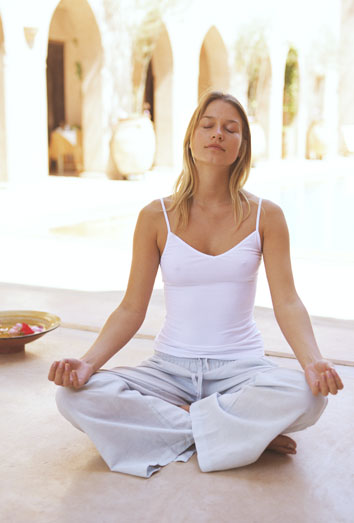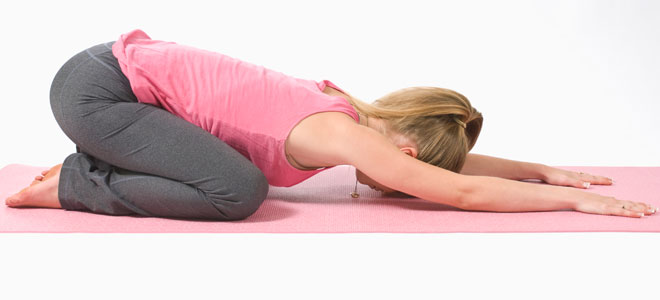Anxiety has become an unwelcome companion for many, casting shadows over our well-being. Recognizing the pressing need for instant relief, individuals seek solace in various anxiety soother techniques that range from ancient practices to modern innovations. This comprehensive exploration delves into the science behind anxiety, unraveling its intricate knots, and identifies key factors contributing to effective anxiety soother techniques. From the empowering realm of DIY strategies that put individuals in control of their well-being to the ancient wisdom encapsulated in the power of breathing and mindfulness meditation, this journey navigates through proven methods for instant relief. Further, we uncover the transformative potential of movement therapy, the comforting elixirs of herbal remedies, the warmth found in tea blends crafted for anxiety relief, and the surprising impact of aromatherapy on the anxious mind. Each section unfolds a unique chapter, offering readers a diverse toolkit to shake off anxiety and discover the path to tranquility. Let’s embark on this journey together, exploring holistic approaches to soothe anxiety and foster a sense of well-being in our daily lives.
| Technique | Description | Tips |
|---|---|---|
| DIY Strategies | Empowering individuals to take control of well-being through conscious acknowledgment and coping. | Identify triggers, experiment with personalized coping strategies, and integrate anxiety-soothing habits into daily routines. |
| Breathing Techniques | Activation of the body’s relaxation response through intentional breathing patterns. | Practice the 4-7-8 technique or diaphragmatic breathing; incorporate deep breaths during moments of stress for immediate relief. |
| Mindfulness Meditation | Ancient practice cultivating present-moment awareness to interrupt the cycle of anxious thoughts. | Start with short guided meditation sessions; gradually increase duration; explore mindfulness apps for structured meditation. |
| Movement Therapy | Engaging in physical activity to release endorphins and provide an expressive outlet for emotions. | Incorporate activities like jogging, dancing, or yoga into daily routine; choose movement that brings joy and relaxation. |
| Herbal Remedies | Utilizing calming herbs like chamomile and valerian root in elixirs for holistic anxiety relief. | Brew chamomile or valerian root tea; consult with herbalists or healthcare professionals for proper usage and dosage. |
| Tea Blends | Crafting comforting tea blends with anxiety-relieving herbs like lavender, chamomile, and lemon balm. | Experiment with different combinations; savor the ritual of tea preparation; choose caffeine-free options for evening relaxation. |
| Aromatherapy | Using essential oils like lavender and chamomile to influence mood positively through scent. | Diffuse oils, add to baths, or use in massage; start with a small amount and dilute as needed; choose high-quality, pure essential oils. |
| Combination Approach | Enhancing effectiveness by combining various techniques for a personalized and holistic approach. | Experiment with a blend of strategies that resonate; create a routine that incorporates multiple techniques for comprehensive relief. |
| Consultation | Seeking professional guidance for underlying health concerns or severe anxiety. | Consult with healthcare professionals, therapists, or herbalists for personalized advice; prioritize safety and well-being. |
Table of Contents
The Science Behind Anxiety: Unraveling the Knots
Anxiety, often described as the body’s natural response to stress, is a complex interplay of psychological and physiological factors. Understanding the intricacies of this phenomenon is crucial in developing effective anxiety soother techniques.
The Biological Response: Unveiling the Fight or Flight Mechanism
At the core of anxiety lies the body’s innate “fight or flight” response. When faced with a perceived threat, the brain releases stress hormones, preparing the body to confront or escape the danger. This primitive mechanism, while evolutionarily advantageous, can become problematic when triggered excessively, leading to chronic anxiety.
Neurotransmitters and Neural Pathways: The Chemical Symphony
Delving deeper, anxiety involves intricate interactions among neurotransmitters and neural pathways. Imbalances in chemicals like serotonin, dopamine, and norepinephrine play a role in amplifying anxious feelings. Understanding this chemical symphony is pivotal in developing anxiety soother techniques that target the root causes.
Key Factors Contributing to Anxiety Soother Techniques
Effectively soothing anxiety involves addressing multiple factors simultaneously. These key elements contribute to the success of anxiety soother techniques, providing a holistic approach to immediate relief.
Breathing Patterns: The Rhythm of Calm
One fundamental factor in anxiety relief is the regulation of breathing patterns. Irregular and shallow breathing often accompanies anxiety, exacerbating the stress response. By consciously adopting deep and intentional breaths, individuals can activate the parasympathetic nervous system, promoting a state of relaxation.
Mental Focus: Redirecting the Mind’s Spotlight
Anxiety is often fueled by negative thought patterns and overthinking. Shifting mental focus through mindfulness and cognitive restructuring can interrupt the cycle of anxious thoughts. Redirecting the mind’s spotlight towards positive affirmations or grounding techniques is a key aspect of anxiety soother strategies.
Physical Activity: Channeling Stress into Motion
Exercise is a potent anxiety soother, releasing endorphins that act as natural mood enhancers. Engaging in physical activity not only improves overall well-being but also provides an outlet for built-up tension. From brisk walks to yoga sessions, finding a physical outlet is a crucial factor in anxiety relief.
DIY Anxiety Soother: Taking Control of Your Well-being
Taking control of anxiety begins with a proactive “do-it-yourself” (DIY) approach. By incorporating simple yet effective anxiety soother techniques into daily life, individuals can reclaim a sense of control over their well-being.
Conscious Acknowledgment: Recognizing the Triggers
The first step in DIY anxiety soother techniques involves conscious acknowledgment. By recognizing the triggers and acknowledging the presence of anxiety, individuals pave the way for targeted relief strategies. This self-awareness is a powerful tool in taking control.
Personalized Coping Strategies: Tailoring Techniques to You
DIY anxiety soother methods are not one-size-fits-all. Individuals are encouraged to explore and experiment with various techniques to identify what works best for them. Whether it’s a breathing exercise, a mindfulness practice, or a physical activity, customization is key to successful DIY anxiety relief.
The Power of Breathing: An Ancient Anxiety Soother
Breathing is an ancient and powerful tool for anxiety relief, transcending cultural and historical boundaries. The way we breathe directly influences our physiological and emotional states, making it a cornerstone in the realm of anxiety soother techniques.
4-7-8 Technique: Inhale, Hold, Exhale
A well-known ancient anxiety soother technique is the 4-7-8 breathing method. Inhale deeply for a count of 4, hold the breath for 7 counts, and exhale slowly for 8 counts. This rhythmic pattern activates the body’s relaxation response, providing instant relief from heightened anxiety.
Diaphragmatic Breathing: From Shallow to Deep
Many individuals unknowingly engage in shallow chest breathing during moments of anxiety. Shifting to diaphragmatic breathing, where the breath originates from the diaphragm rather than the chest, promotes a more profound sense of calm. This simple yet effective technique can be practiced anywhere, making it a versatile anxiety soother.
Mindfulness Meditation: A Modern Solution to Ancient Anxieties
Mindfulness meditation, rooted in ancient practices, offers a modern solution to the timeless issue of anxiety. By cultivating present-moment awareness, individuals can navigate the complexities of the mind and find respite from anxious thoughts.
Present-Moment Awareness: Breaking Free from the Past and Future
Anxiety often thrives in thoughts of the past or worries about the future. Mindfulness meditation encourages individuals to anchor their awareness in the present moment, breaking the cycle of rumination and promoting a sense of calm.
Guided Meditation: Navigating the Mind with a Compass
For those new to mindfulness meditation, guided meditation sessions can serve as a compass, providing direction and focus. Apps and online resources offer a plethora of guided sessions, making mindfulness meditation a practical and accessible anxiety soother for all.
Movement Therapy: Shake off Anxiety with Physical Activity
Engaging in physical activity is a dynamic and effective approach to shaking off anxiety. Movement therapy, encompassing a range of exercises, can significantly alleviate stress and promote an overall sense of well-being.
Release of Endorphins: Nature’s Mood Boosters
Movement therapy taps into the body’s natural mechanism for mood enhancement by triggering the release of endorphins. These feel-good neurotransmitters act as powerful anxiety soothers, countering the physiological effects of stress. Activities such as jogging, dancing, or even a brisk walk can be potent tools in shaking off anxiety.
Expressive Movement: Communicating Emotions Through Motion
Beyond the physiological benefits, movement therapy provides a platform for expressive movement. It allows individuals to channel and release pent-up emotions, providing a cathartic outlet for anxiety. Techniques like dance therapy or tai chi enable individuals to communicate and process emotions through intentional movement.
Herbal Remedies and Anxiety Soother Elixirs
Nature has bestowed us with a wealth of herbal remedies that serve as anxiety soothers. Incorporating these herbs into elixirs can provide a comforting and holistic approach to anxiety relief.
Chamomile Elixir: The Calming Brew
Chamomile, known for its calming properties, is a classic herbal remedy for anxiety. Brewing chamomile tea or creating a chamomile elixir can offer a soothing ritual. The compound apigenin in chamomile interacts with neurotransmitters, promoting relaxation and alleviating anxiety symptoms.
Valerian Root Infusion: Nature’s Tranquilizer
Valerian root, with its sedative properties, has been used for centuries as a natural anxiety soother. Crafting a valerian root infusion can provide a gentle sedative effect, helping individuals relax and unwind. It is essential to use valerian root with caution and under proper guidance due to its potent nature.
Finding Peace in a Cup: Tea Blends for Anxiety Relief
Tea, beyond being a comforting beverage, can serve as an excellent anxiety soother. Crafting tea blends with specific herbs and botanicals enhances its anxiety-relieving properties, providing a warm and therapeutic experience.
Lavender Infusion: A Fragrant Oasis of Calm
Lavender, renowned for its aromatic and calming qualities, can transform a simple tea into an anxiety soother elixir. Infusing lavender into your favorite tea blend or creating a lavender chamomile combination can create a fragrant oasis of calm, promoting relaxation with each sip.
Lemon Balm Delight: Citrusy Serenity in a Cup
Lemon balm, a member of the mint family, is celebrated for its calming effects on the nervous system. Incorporating lemon balm into tea blends adds a delightful citrusy flavor while acting as an anxiety soother. This bright and soothing elixir can be enjoyed throughout the day.
The Surprising Impact of Aromatherapy on Anxiety
Aromatherapy, harnessing the power of essential oils, presents a surprising and effective approach to anxiety relief. The olfactory system’s direct connection to the brain allows aromatic compounds to influence mood and emotions positively.
Lavender Scented Sanctuary: Calming the Mind and Body
Lavender essential oil stands out as a powerhouse in aromatherapy for anxiety. Its soothing aroma has been linked to reduced stress and anxiety levels. Diffusing lavender oil or incorporating it into massage oils creates a scented sanctuary that calms both the mind and body.
Chamomile Comfort: A Sweet Scent for Serenity
Chamomile essential oil, with its sweet and apple-like aroma, offers another surprising ally in anxiety relief. Inhaling the gentle scent of chamomile can induce a sense of calm and relaxation. Aromatherapy through chamomile oil can be experienced through diffusers, inhalers, or diluted in carrier oils for topical application.
Final Thoughts:
In the labyrinth of anxiety, where stress can feel all-encompassing, this exploration of proven anxiety soother techniques serves as a guiding light towards tranquility. From unraveling the scientific intricacies of anxiety to embracing DIY strategies, the power of breath, and the timeless practices of mindfulness meditation, we’ve uncovered a diverse toolkit for instant relief. Movement therapy, herbal elixirs, tea blends crafted for serenity, and the surprising impact of aromatherapy have been revealed as transformative allies in the journey towards well-being. As we conclude this comprehensive guide, remember that finding relief from anxiety is a dynamic, personal journey. Incorporate these strategies into your daily routine, experiment with what resonates most, and allow these proven techniques to become a source of strength and comfort in your life. May the path to tranquility be paved with the empowerment to shake off anxiety and embrace a future filled with peace and well-being.
FAQs:
Q1: What is the science behind anxiety, and how does it impact our well-being?
Understanding anxiety involves unraveling the intricate interplay of psychological and physiological factors. Chronic anxiety can lead to the overactivation of the body’s stress response, impacting both mental and physical well-being.
Q2: How can DIY strategies contribute to anxiety relief?
DIY strategies empower individuals to take control of their well-being by offering practical and personalized approaches to anxiety relief. These may include conscious acknowledgment, personalized coping strategies, and daily habits that contribute to long-term success.
Q3: What makes breathing techniques an ancient anxiety soother, and how can they be practiced?
Breathing techniques have been used for centuries to activate the body’s relaxation response. Practices like the 4-7-8 technique and diaphragmatic breathing can be easily incorporated into daily life to promote a sense of calm.
Q4: What is the role of mindfulness meditation in alleviating anxiety?
Mindfulness meditation, rooted in ancient practices, encourages present-moment awareness, breaking the cycle of anxious thoughts. Guided meditation sessions and cultivating mindfulness offer modern solutions to ancient anxieties.
Q5: How does movement therapy contribute to anxiety relief?
Movement therapy, including activities like jogging, dancing, and yoga, releases endorphins, the body’s natural mood boosters. It provides an outlet for emotions, contributing to anxiety relief through both physiological and expressive means.
Q6: Can herbal remedies be effective anxiety soothers, and what are some examples?
Yes, herbal remedies like chamomile and valerian root have been recognized for their calming properties. Creating elixirs with these herbs can provide a holistic approach to anxiety relief.
Q7: What tea blends are recommended for anxiety relief?
Lavender-infused tea blends, chamomile elixirs, and lemon balm delights are suggested for their anxiety-soothing properties. These teas offer a comforting and therapeutic experience.
Q8: How does aromatherapy impact anxiety, and what are some essential oils recommended?
Aromatherapy, through essential oils like lavender and chamomile, influences mood and emotions positively. Diffusing these oils or using them in massage can create a calming environment, serving as a surprising yet effective anxiety soother.







